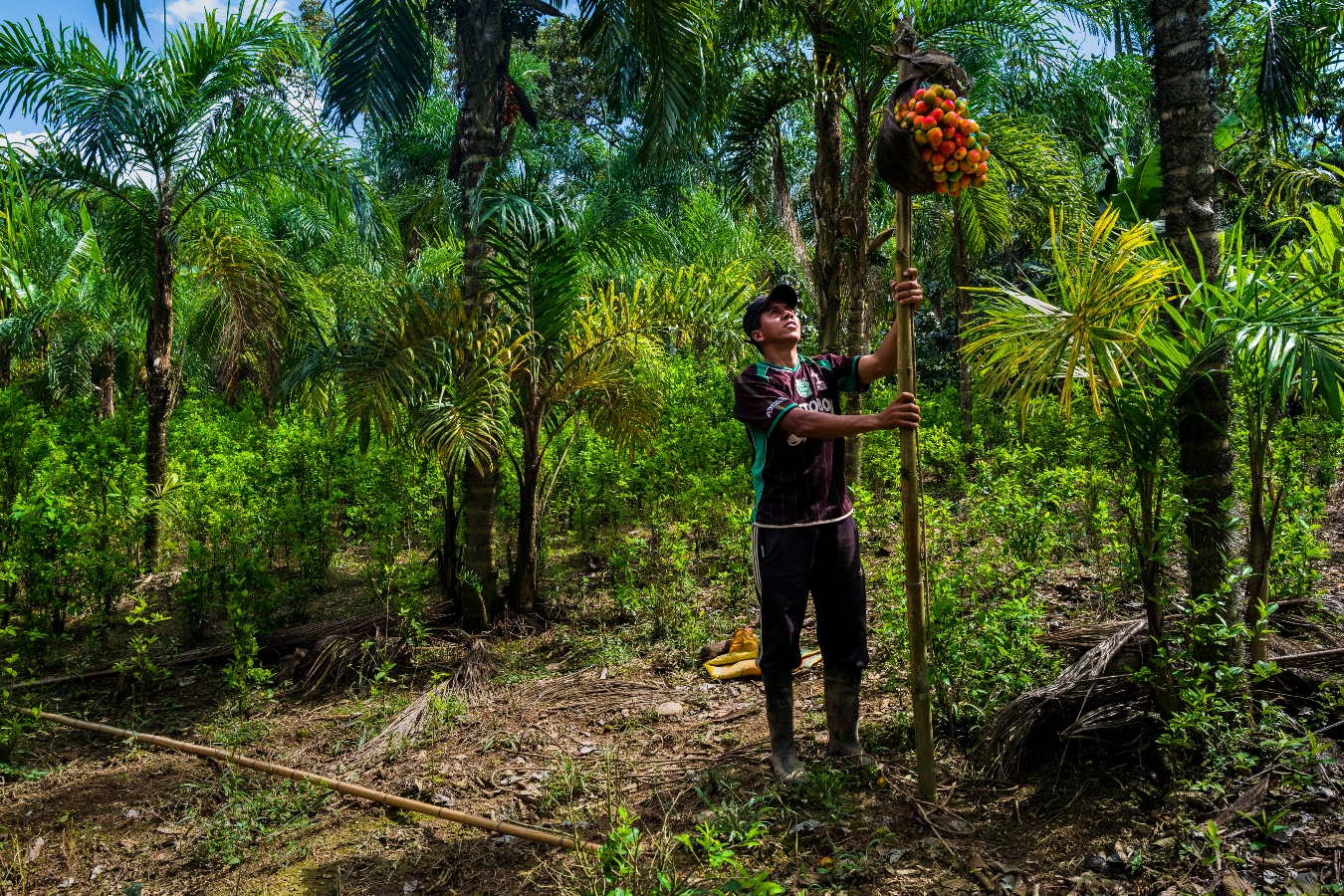To reach net-zero carbon goals with their current plans, countries around the world will need 1.2 billion hectares of land, an area larger than the United States and equivalent to the world’s total cropland, for carbon removal projects. More than half of that land would need to be transformed into new forests. According to a new study, countries are over reliant on massive tree planting projects, and other land-based carbon removal schemes, to meet climate targets and avoid more effective measures like cutting fossil fuel use or conserving primary forests.
The “Land Gap” report, compiled by 20 researchers around the world and released this week by Melbourne Climate Futures, is the first to calculate the massive gap between governments’ reliance on land for carbon mitigation and the role that land can realistically play given availability and competing needs. The report also highlights that using land for carbon removal via tree planting programs will have negative impacts on ecosystems, Indigenous communities, food security, and human rights.
“There are assumptions that land can save you somehow from having to do deeper cuts in terms of fossil fuel production and use,” said Anne Larson, one of the authors of the report. “It’s distracting and it’s not going to work.”
For years Indigenous groups have warned about the dangers of depending on forests to remove carbon from the atmosphere without clear guarantees of Indigenous rights. The report shows global climate pledges have the potential to put communities at higher risk of danger. Repurposing land for plantations and other tree planting-based carbon removal could push Indigenous peoples from their land ultimately weakening the environment.
“We will lose everything,” said Levi Sucre, Bribri from Costa Rica and the Coordinator of the Mesoamerican Alliance of Peoples and Forests. “We have to figure out an alternative way to sustain our lands, our communities.”
Tree planting has been shown to be a tenuous strategy to mitigate climate change, and part of the problem is the accounting system used to track carbon emissions. Cutting fossil fuel use is a guaranteed way to reduce atmospheric carbon while trees are unreliable: they take a long time to grow, need land that often isn’t available, can be harvested, or can even burn down. However, countries treat cutting fossil fuels and planting trees as the same. That means countries can make ambitious pledges based on future land use changes instead of jeopardizing short term economic interests by cutting fossil fuels. The report recommends countries make deep cuts in emissions from industrial agriculture, deforestation and fossil fuels instead of relying on unavailable land for carbon offsets. “We should really be seeing reductions and removals as two different things,” said Kate Dooley, one of the report’s authors.
As well, researchers found that if land-based strategies are to work as a complement to emission cuts, they’ll need to be oriented away from simply planting trees in order to be just and effective. To that end, the study emphasized safeguarding the rights of Indigenous peoples in order to protect forests. Research has shown that the world’s healthiest forests are on protected Indigenous lands, and securing Indigenous land tenure rights, as well as political status, would protect communities and the lands they call home.
“We are under constant threat due to land disputes. We need to have a clear demarcation of indigenous lands. We need effective land protection policy, and also protection of those of us who live in these areas,” said Sonia Guajajara, the first Indigenous person to be elected federal deputy in São Paulo. “That is urgent. That is fundamental.”
Tree planting and reforestation projects typically prioritize monocultures of fast growing commercial trees over biodiversity. Offering limited ecosystem integrity, they are extremely susceptible to fires and droughts, emit carbon when they are harvested, and, even in the best case scenarios, they don’t provide immediate, critical carbon storage payoffs because trees need time to grow. Instead, the report emphasizes protecting standing forests from extractive industries like logging, mining, and agriculture as the first priority. Most critical are primary forests, which store the most carbon and are the most stable and resilient to climate change.
The report encourages restoring degraded natural ecosystems instead of planting new forests, or creating monoculture plantations. The U.N.’s Global Land Outlook report estimates 5 billion hectares of land is suitable for restoration, but at the moment, countries’ pledges examined in the study only account for restoring 551 million hectares of degraded ecosystems leaving room for world leaders to focus on ecological restoration, natural regeneration, and agroforestry. However, only twenty countries mention agroforestry in their climate plans.
Countries that signed the Paris Climate Accords are supposed to update their commitments every five years at least, and in 2021, the U.S. set a goal of reducing net greenhouse gas emissions by at least 50 percent below 2005 levels in the next eight years. The authors of the report hope that as world leaders head to the COP27 climate summit to discuss their climate pledges and make new, more ambitious commitments, they will reconsider the impact of carbon removal and refocus on ecosystem restoration, primary forests, and protecting Indigenous rights.
“It isn’t too late for countries to rethink the way they use land to achieve their climate goals,” said Brendan Mackey, a report co-author.




